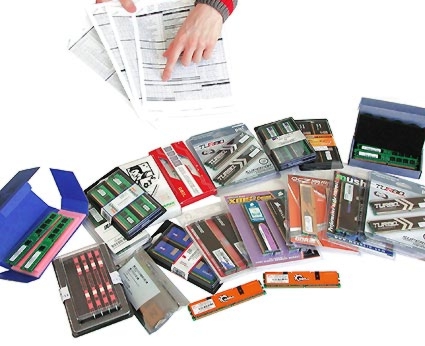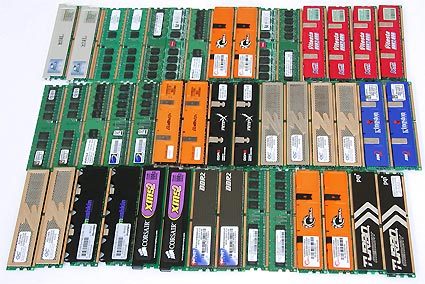In Search of True DDR2 Bleeding Edge Memory
Optimal DRAM For Overclocking
As you upgrade to an Intel socket 775 motherboard that requires DDR2, which memory modules will keep your machine at the top of the food chain when it comes to overclocking? Or which devices are better suited for more routine, yet high-end computing needs? We procured 16 DDR2 DRAM modules after asking vendors to send us their finest to find out.
The first thing that struck us were disparities in the modules' purported bandwidths. Labels ranged from DDR2-533 to a dubious DDR2-1000 designation. We also received some hand-inscribed early prototypes that some of our vendors probably haven't yet brought to market (or have they?). We'll answer this last question in our upcoming live stress test, when THG will purchase winners from this round of tests and put them through an endurance trial and more overclocking tests.
DDR2 modules for overclocking to the maximum of stability.
There have recently been a few changes in memory modules. First, the delivery of new Intel platforms based on 915 through 975 chipsets for socket 775 have mandated use of DDR2 modules. AMD is also working toward DDR2 support in the near term, which is necessary to support their new processor sockets. DDR2 is supplanting conventional DDR memory, thanks to many underlying technical advantages that work in its favor: The processes used to make the chips are based on 110-nm and 90-nm production, which reduce power consumption vis-à-vis "old" DDR modules. One consequence is that far less heat dissipates from these lower-powered components, which also offer faster transfer rates (4 Byte prefetch) and higher clock speeds. DDR2 also makes it easier to fit 2 GB worth of memory chips on a single DIMM (although a few 2 GB DDR modules are available, they're rare and fairly expensive).
Right now, the time is ripe for buying memory: generic 1 GB modules are available at rock-bottom prices start at around $60, while 512 MB models go for as little as $35. Performance improvements of as much as 40% are possible simply by replacing slower memory modules with those optimized for a specific hardware configurations (in fact, 40% is the memory bandwidth difference between DDR2-533 and DDR2-800). Overclocking is at the heart of this comparison review, because it can increase overall memory bandwidth by as much as 50%.
As opposed to the mostly marginal effects of modest CPU clock boosts, careful fine tuning of memory timings and clock rates can have profound impacts on performance. Performance of Pentium 4 and Pentium D processors, for example, both scale strongly upward at higher memory throughput rates.
Get Tom's Hardware's best news and in-depth reviews, straight to your inbox.
Tom's Hardware is the leading destination for hardcore computer enthusiasts. We cover everything from processors to 3D printers, single-board computers, SSDs and high-end gaming rigs, empowering readers to make the most of the tech they love, keep up on the latest developments and buy the right gear. Our staff has more than 100 years of combined experience covering news, solving tech problems and reviewing components and systems.


